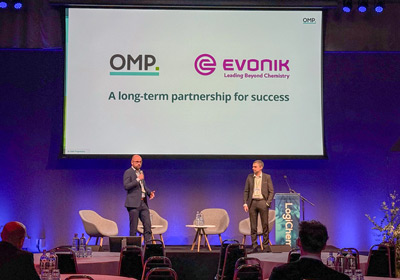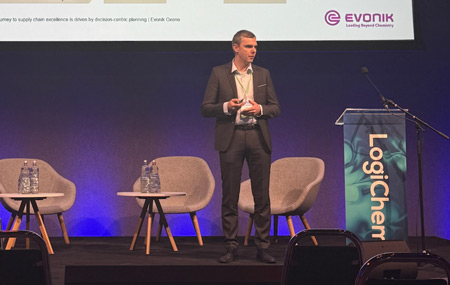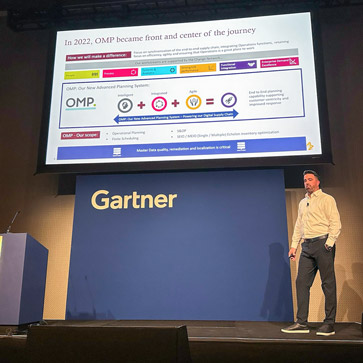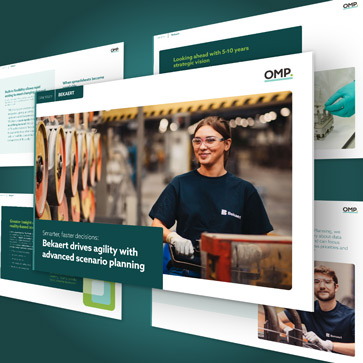
How Evonik Oxeno is transforming supply chain excellence
March 19
At LogiChem in Rotterdam, David Kochanek, Supply Chain Solution Manager at Evonik Oxeno, shared insights into the company's journey toward a more agile, data-driven supply chain. Moving away from traditional process-centric planning, Evonik Oxeno has embraced decision-centric planning, enabling better collaboration, faster decision-making, and improved operational outcomes.
From process-centric to decision-centric: a necessary evolution
Case study
Evonik Oxeno previously relied on traditional, process-driven planning cycles, which were often slow, rigid, and not agile. As a result, the company faced challenges in decision quality and velocity.
Recognizing the need for a more dynamic approach, Evonik Oxeno implemented a Decision Intelligence Platform, transforming how planning decisions are made. This shift enabled:
- Faster scenario modeling – Being able to run 40–50 scenarios per day to assess different planning options.
- Data-driven decision-making – Replacing intuition with real-time analytics and insights.
- Cross-functional collaboration – Integrating input from multiple departments to create a more holistic and aligned planning process.

Case study
Overcoming planning challenges
Before the implementation of decision intelligence, Evonik Oxeno faced several common supply chain hurdles, including:
- Lack of integration between short-, mid-, and long-term planning – Resulting in misalignment across different time horizons.
- Data overload without actionable insights – Too much raw data but not enough clarity on what it meant for decision-making.
- Slow reaction times to disruptions – Planning cycles that weren’t designed to adapt quickly.
Key outcomes and learnings
Case study

The transformation has already led to tangible benefits:
- Improved decision quality and velocity – Planners now using simulations and analytics to make decisions with greater confidence and efficiency.
- A shift from intuition to data-backed insights – Eliminating reliance on assumptions and making decisions more objective. Like: "Planners are now expected to support every decision with data, testing hypotheses rather than relying on past experiences alone," Kochanek shared.
- Greater supply chain flexibility – Allowing the company to anticipate and proactively adjust to changing conditions in supply and demand.
- End-to-end visibility – Not only into the production process but also into potential future disruptions and their impact.
Case study
A key takeaway from the journey was that technology alone is not enough — success requires a cultural shift toward data-driven decision-making. By adopting decision-centric planning, the company moved beyond static planning cycles, focusing instead on continuous learning, real-time adaptation, and scenario-driven decision-making.
Looking ahead
While the initial implementation has delivered strong results, the journey toward supply chain excellence is ongoing. Evonik Oxeno is focused on continuous refinement of its decision-centric approach, with plans to:
- Optimize cross-functional planning processes to ensure even deeper collaboration between departments.
- Improve predictive capabilities to better anticipate supply chain risks before they arise.
Kochanek’s presentation highlighted an important shift: supply chain planning needs to move beyond rigid, process-focused models to more flexible, decision-driven frameworks. Evonik Oxeno’s transformation offers valuable insights into how chemical manufacturers — and other industries — can adapt their supply chains to meet the challenges of a volatile and more complex environment.





